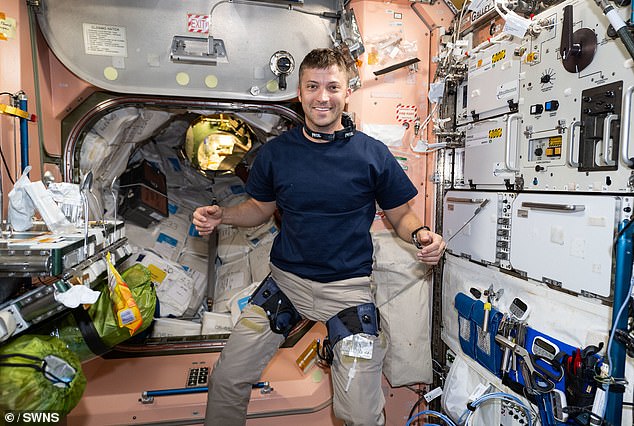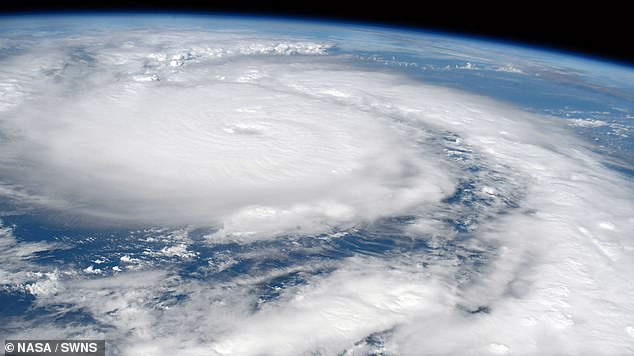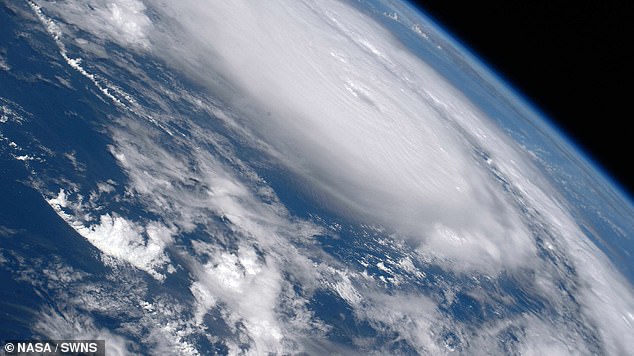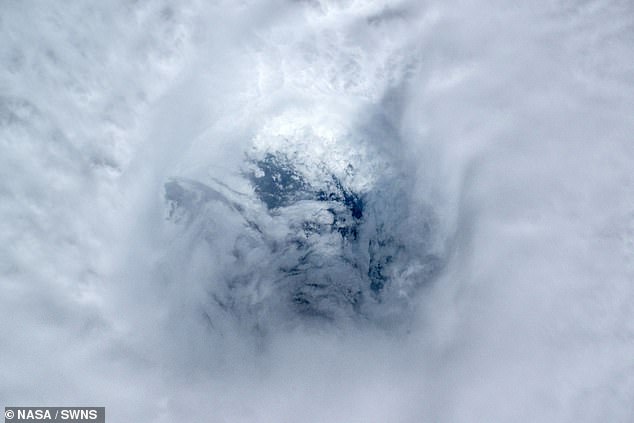‘Eerie’ photos of Hurricane Beryl taken by NASA astronaut from space – as US braces for impact
A NASA astronaut has captured breathtaking images of the devastating Hurricane Beryl from space.
Matthew Dominick captured the images as the International Space Station flew more than 200 miles (320 kilometers) above the Caribbean on July 1.
“When I looked into the eye with the 50-500mm lens, I got both a creepy feeling and a huge weather nerd excitement,” Dominick shared in an X post.
Hurricane Beryl has killed at least six people and is expected to bring life-threatening winds and storm surges to Jamaica.
The astronaut pointed his lens at Earth on Monday as Beryl made its first landfall in the Caribbean Islands
Dominick pointed his lens at Earth on Monday as Beryl made its first landfall in the Caribbean islands.
At the time, the hurricane was still a Category 4 hurricane with winds of up to 130 mph (210 km/h).
The images show the storm swirling around the Atlantic Ocean, with a well-organized eye in the center, SWNS reported.
NASA studies hurricanes from space using images like the astronaut’s. “The lookout helps scientists understand how climate change is affecting hurricanes and how communities can better prepare.”
The powerful Category 5 storm has already caused significant damage after wind gusts of 165 mph (265 km/h) battered parts of the Caribbean.
In Jamaica, storm surges of up to 2.7 metres above normal tide levels are likely, as well as heavy rainfall.
Michael Brennan, director of the National Hurricane Center, said: “There is a great danger in the Caribbean, especially on the mountainous islands.

Matthew Dominick captured the images while the International Space Station was more than 200 miles (320 kilometers) above the Caribbean on July 1

“When I looked into the eye with the 50 to 500mm lens, I got both a creepy feeling and a high level of weather nerd excitement,” he said in an X post
“This could cause life-threatening flooding and mudslides in some of these areas.”
A new model also predicts Hurricane Beryl will move through six US states.
Earlier data indicated that the hurricane could hit Texas this weekend.
The National Hurricane Center has now added parts of the state to its hurricane forecast cone.
According to a model by hurricane expert Dr. Levi Cowan, Louisiana, Arkansas, Tennessee, Mississippi and Kentucky could now also be hit by the storm.
At least five spaghetti models, data split into bundles that show the possible path of a storm, now indicate the hurricane will hit the US.

The images show the storm swirling around the Atlantic Ocean, with a well-organized eye in the center

Hurricane Beryl has killed at least six people and is expected to bring life-threatening winds and storm surges to Jamaica
According to Beryl, Texas is in the firing line of the five models that have impacts on the US. However, there is another model that suggests Louisiana could also see some impact, with a possibility of the storm affecting all six states.
“It really depends on where the hurricane comes from on Friday. If it comes off the Yucatan Peninsula and goes far enough north, it could gain width and threaten the northwest Gulf of Mexico. That could mean northern Mexico or Texas and the U.S. Gulf Coast,” Dr. Cowan said.
“But if the storm moves further down, for example if it is a weaker storm, then it will likely move further west, towards eastern Mexico.”
Beryl’s orbit is determined by the pressure over the southeast.
If this drops, the storm could move north and potentially spell disaster for the US.
Gulf Coast residents are urged to monitor the record-breaking storm, the earliest Category 5 hurricane ever recorded in the Atlantic, Caribbean and Central America.
